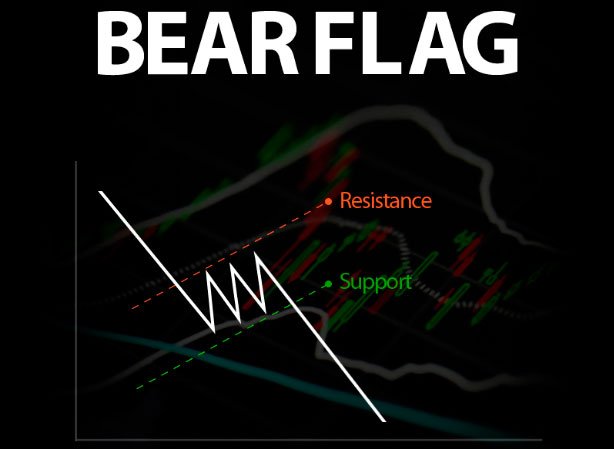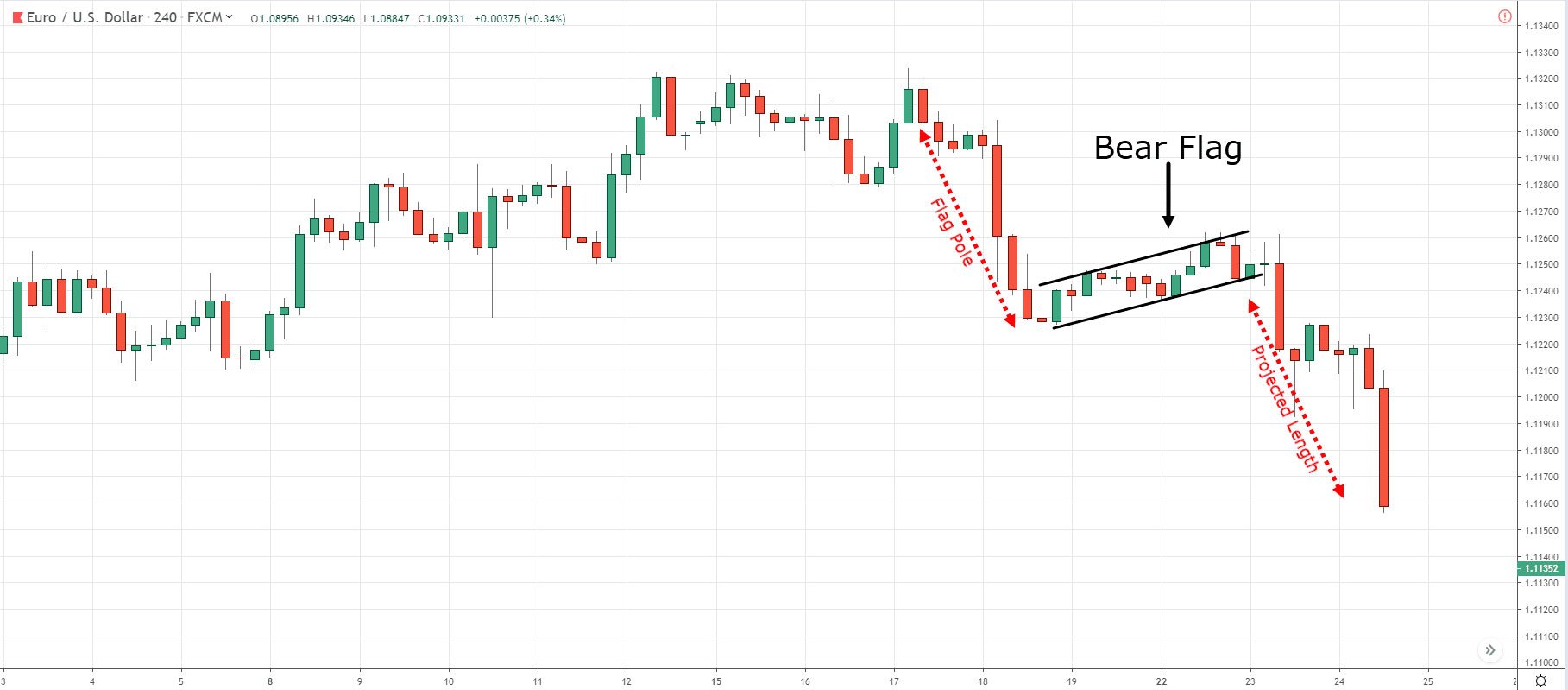How to Trade Bear Flag Pattern

The bear flag pattern, like many others, is an on-chart pattern that occurs as a result of a strong downtrend. It is the direct opposite of the bull flag. And, because of the time of its occurrence (during a downtrend), we call it a bearish flag pattern. We call it a flag because of its resemblance to a flagpole. In technical analysis, we consider flags and pennants as short-term continuation patterns serving as indicators of consolidation before the former move gets up and running again. As you read on, you'll get to learn what a bear flag is, how to identify, draw the bear flag, and the strategies to trading the bearish formation like a seasoned trader.
The Bear Flag Pattern Explained
You'd be correct if you identify the bear flag as a bull flag turned upside down. Both flags predict price movement with high-level probability, and as such, they present a lot of profitable trading opportunities. The formation of the bearish flag takes place during a downtrend. You can pick out the bearish formation if you can identify its components. The bearish flag pattern comprises of three parts.
A steep-like or downward movement on the chart signifies the flag pole:
- A period of consolidation where buying kicks in represents the body of the flag. If you trade this flag and are on the lookout for short entry into the market, you should hold for the moment when the price breaks below the support of the consolidation. The breakout indicates a continuation of the preceding trend.
- The bear flag pattern signifies the moments when supply is greater than demand in the market. As a result, we observe a little upside retracement allowing the flag to take form.

In summary, the pole of the flag forms as a result of a strong momentum moved lower, as shown by large-range candles. This downward move indicates a duration when the sellers control the market with little or no buying from the buyers.
As stated earlier, the bear flag pattern presents lucrative trading opportunities when they occur. In essence, short-traders may want to take advantage of the downtrend to make quick profits. This strategy may be disastrous as the market makes a new low after the pullback. Read on to find out how to trade the bear flag pattern successfully.
Successful Bear Flag Trading Strategies
Once a trader can identify all the components of the pattern, trading is pretty much straightforward. Worthy of mentioning is the fact that the bear flag pattern is one very reliable on-chart pattern. The reason is that it falls among the formations that generate a setup for entering an existing trend that is bound to continue. Patience is vital when trading this flag pattern. Just as it is many any other flag, one has to wait for the pattern to complete its formation on the chart so you can plot the upper and lower trendlines. These will contain your entry and stop levels. There are critical areas you have to keep in mind while trading the bearish flag pattern.
- ENTRY SPOTS
On entering the market, one has to be sure the flag is not false. A sharp decline symbolizes a valid bearish flag— a proof that the supply-demand chain is out of equilibrium. A good bearish flag pattern tends to push the price action further in the direction of the trend impulse. Even though the flag moves upwards in the channel, successive lower highs and lower lows bring about a resulting move to the downside. It is best to enter the trade when there is confirmation the price has broken (short position) and closed above the upper parallel trend line—The long position.
- PROTECTIVE STOP-LOSS
There is an easy method of quantifying our risks, given that we are about to implement a rectangle pattern trading strategy. The goal is to incur minimal losses while we achieve a higher risk to reward ratio. If the stock fails to hold its impulse, the pattern allows for two systematic stop-loss levels. You can set the first and prudent stop-loss under the upper trendline on uptrends and lower trendline on downtrends. You can place the second protective stop-loss at or under the lower trendline on uptrends and lower trendline on downtrends.
- PRICE TARGET
There are many indicators to help derive the price target when trading the bearish flag pattern. Traders would want to take a profit target equivalent to the price distance of the Flag pole measured down from the top of the bearish flag. You can do this by evaluating the difference between the parallel trend lines (measured in price) of the flag pattern to set a profit target.

Bear Flag Reversal
More often than not, a bearish pattern- just like any other patterns fail to carry on with the initial impulse. If you happen to be a hasty trader, you could suffer a great loss if it happens. As stated earlier, patience is a decisive prerequisite when trading flag patterns. All the components of the pattern have to be in place before making a move. However, the mishaps are enough for traders to accept these unexpected events as usual and promptly modify their strategies to circumvent additional losses.
While it is heartbreaking to some, reversals sometimes present lucrative opportunities for traders in the opposite direction. These traders learn from the stranded traders, abstain from rushing into the trade to ensure the pattern was valid.
Conclusion
Trading the very reliable bear flag continuation pattern comes with huge benefits as well as its flaws, same as any other pattern in the financial markets and technical analysis. Many expert traders have recorded a considerable amount of profits trading the bearish flag. However, regardless of the pattern you trade, you should pay premium attention to position size choices, overall market trends, and proper risk management. All of these will ensure a high-level success while trading the pattern.









